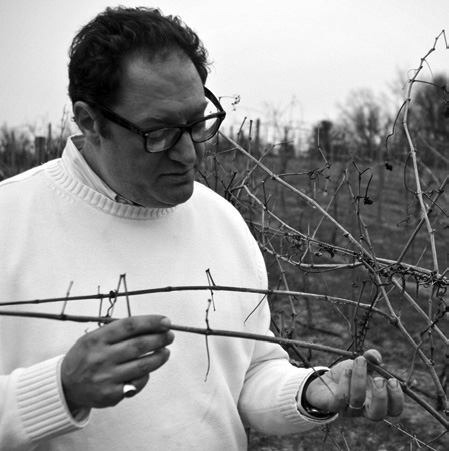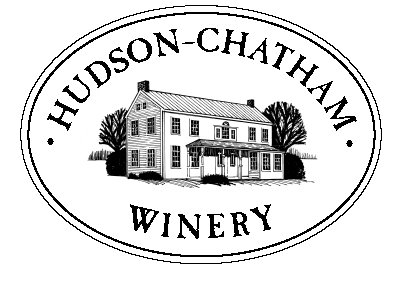Hill Country Observer Raves About Hudson-Chatham Winery
Local flavors are priority for vintners in Columbia County
By NED OLIVER
Contributing writer

GHENT, N.Y.Carlo DeVito’s first experience making wine wasn’t exactly encouraging.
“My first batch was undrinkable,” he recalled.
But from that inauspicious beginning, DeVito and his wife, Dominique, kept tinkering and tweaking to become award-winning vintners. They founded Columbia County’s first winery, Hudson-Chatham Winery, which produces varieties ranging from a signature Baco noir to a classic Riesling.
For now, most of their wines are produced with grapes grown elsewhere in New York – from Long Island to the Finger Lakes. But the DeVitos established their own vineyard in 2007 and began producing estate wines last year.
The Hudson-Chatham Winery is on the frontier of a steadily growing wine industry in New York, which is expanding to areas like Columbia County that traditionally were not considered hospitable to grape production.
Jim Trezise, the president of the New York Wine and Grape Foundation, said the establishment of new wineries like the DeVitos’ is part of a trend.
“It’s really exciting, because it’s symbolic of what’s happening throughout the state,” he said. “Twenty years ago, there were probably only 15 counties in the state that were producing wine. Today, 50 out of 62 counties are producing.”
In the few years since the DeVitos founded Hudson-Chatham, a second winery got started in Columbia County: the Tousey Winery in Clermont. Both Tousey and Hudson-Chatham are part of the self-guided Hudson-Berkshire Beverage Trail, which also includes three wineries in Berkshire and Rensselaer counties as well as local breweries and a distillery.
The DeVitos, both veterans of the Manhattan publishing industry, landed in Ghent after they decided to move from New Jersey to rural New York to chase Carlo’s dream of running a winery.
The couple said that, despite a conspicuous absence of vineyards in Columbia County at the time, they were drawn to the region first and foremost by its many small farms that are producing high-quality products.
“The region is recognized for those products,” Carlo DeVito said. “We’re part of a community here. I can drive down the road to artisanal creameries, meat farms, CSAs.” The DeVitos have cultivated ties to these other local food producers – for example, by offering a variety of Hudson Valley cheeses in their tasting room.
Keeping a day job
On a recent day at work in the vineyard, Carlo was dressed in a spotless white sweater and white slacks. Only a layer of dirt caked onto the palms of his hands betrayed his newfound vocation.
He still works in the publishing industry by day, mostly overseeing food- and wine-related book projects. He’s the author of the recently released “East Coast Wineries: A Complete Guide from Maine to Virginia.”
“It’s kind of fun,” Carlo said. “I work with famous wine writers during the day then go home and make my own wine at night.”
Dominique DeVito, who pulled up to the vineyard in her minivan after visiting a farmers market in Schenectady, still picks up the occasional freelance publishing job, focusing on pet-related projects.
The DeVitos said their search for the perfect place to plant their vineyard led them up the Hudson Valley – far enough north to escape environments they considered “too suburban.”
The couple ended up in a 1780s farmhouse atop a windswept hill in Ghent. They planted their first grapes that spring in what used to be the birthing pasture of a 500-acre dairy formerly known as Brisklea Farm.
The combination of affordable land, a hospitable site for growing grapes, and Ghent’s proximity to Albany and the Berkshires all added up to make the now 15-acre farm an ideal location, they said.
Also good for business, Carlo DeVito said, is nearby Hudson, which, with its influx of gourmet restaurants and galleries in the past two decades, provides a good base of customers who are already part of what DeVito calls “the wine crowd.”
The DeVitos say their wine is catching on. Area restaurants that stock it range from Local 111 in Philmont to the Culinary Institute of America in Hyde Park. They also distribute their wine through 35 area stores and at five farmers markets, and “a fair amount goes out of the tasting room,” Carlo DeVito said.
DeVito said Hudson-Chatham Winery sold more than 26,000 bottles of wine last year. The operation makes a profit, but he said he’s put all of that back into the business. “I still have a day job, no doubt about it,” he said.
Despite the reinvestment in the business, he said he has no plans to expand the winery’s scale dramatically.
“I’d rather make better wine than more wine,” he explained.
Taste of a location
The DeVitos age their wine in a small, timber-framed barn left over from the former dairy operation. Carlo DeVito, with some effort, slid open the door, revealing a room packed with 72 barrels, each of which can hold 60 gallons of wine.
DeVito used a barrel thief, a long slender tube, to extract samples from the red-stained casks. Tasting these samples reveals how each variety is maturing.
“You want to check and see if good things are happening, or if good things aren’t happening,” DeVito said. “It’s exciting.”
He said the vineyard is still small but is maturing nicely. The DeVitos plan to plant 800 new vines this year.
Dominique DeVito said making wine is a site-specific process, shaped by the land and the growing season. In Columbia County, she said, the growing season is about five months long – far shorter than the eight-month growing season in California’s wine country.
“Master gardeners will tell you, it’s like swimming upstream to fight the growing season,” she said.
“That’s why most of our wines are medium bodied,” she added, in contrast to “big, bold California reds.”
Trezise, the state wine foundation president, said wineries like Hudson-Chatham are blossoming as people learn more about how to grow grapes in different climates.
“In this industry, there’s a kind of inertia,” Trezise said. “Fortunately, there are people like the DeVitos who say, ‘I’m going to give something a try anyway.’”
Trezise said the Finger Lakes and the lower Hudson Valley traditionally have been considered New York’s wine-producing regions. But over time, he said, researchers have shown that, if you find the right site and select the right grapes, you can make good wine in pretty much any region.
“People have done their homework and said, ‘OK, if we plant these grapes, they’ll grow,’” Trezise said. “Occasionally there will be a disaster, but there will usually be a good crop and people can make good wine and do a good business.”
Trezise said the number of wineries in New York has grown from 63 in 1990 to 303 today. As regions like the Hudson Valley gain recognition for the wines they produce, more wine makers will be attracted, he said.
“Every week I get one or more phone calls from different parts of the state -- people thinking about opening a winery, asking what they should do,” he said.
Read it at:



0 Comments:
Post a Comment
<< Home